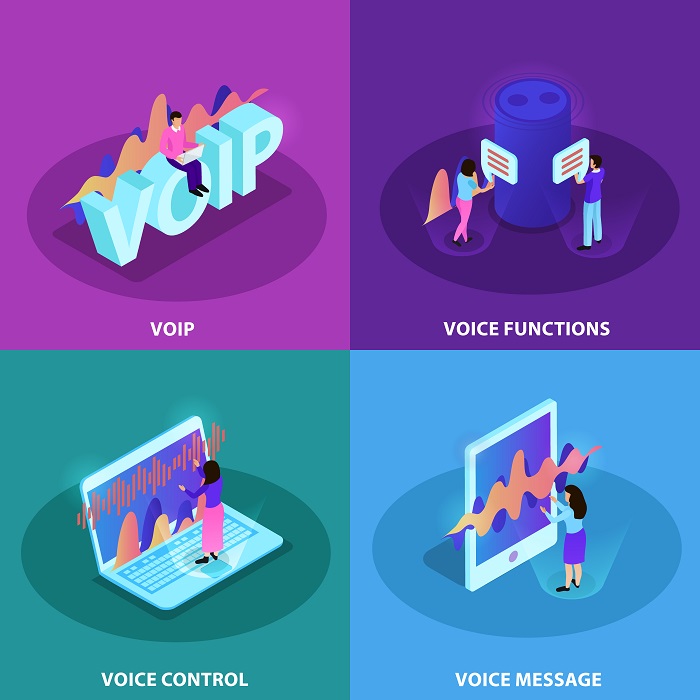In today’s fast-paced world, effective and efficient communication plays a crucial role in the success of businesses across various industries. To streamline customer interactions and enhance service quality, many organizations have turned to Interactive Voice Response (IVR) systems. An IVR system is a telephony technology that allows callers to interact with automated menus and prompts using their voice or keypad input. This blog post will explore the features, benefits, and considerations associated with IVR systems, highlighting their importance in modern customer service.
Understanding Interactive Voice Response (IVR) Systems:

An Interactive Voice Response system is an automated telephony technology that enables callers to interact with a computerized voice or touch-tone keypad input. IVR systems provide a range of options and information to callers based on their input, allowing them to navigate through menus, access specific services, or obtain the information they require. These systems can handle a wide range of tasks, including call routing, information retrieval, transaction processing, and more.
Key Features and Functionality Of IVR
a. Call Routing and Transfers: IVR systems can efficiently route incoming calls to the appropriate department or individual based on predefined rules or caller input. This feature helps in reducing call wait times and improves customer satisfaction.
b. Self-Service Options: IVR systems offer self-service capabilities that empower callers to perform tasks such as checking account balances, making payments, updating personal information, and accessing frequently asked questions (FAQs) without the need for agent assistance.

c. Speech Recognition: Advanced IVR systems leverage speech recognition technology, allowing callers to interact with the system using their natural voice instead of navigating through touch-tone menus. This feature enhances the user experience and simplifies the interaction process.
d. Multilingual Support: IVR systems can support multiple languages, enabling organizations to cater to a diverse customer base effectively. Callers can choose their preferred language, enhancing accessibility and user satisfaction.
e. Integration with CRM Systems: IVR systems can integrate with Customer Relationship Management (CRM) platforms, enabling seamless transfer of data and context between the IVR system and live agents. This integration ensures a personalized customer experience and reduces the need for customers to repeat information.
Benefits of IVR Systems
a. Improved Customer Experience: IVR systems offer 24/7 availability and allow customers to access information or services quickly. By reducing wait times and enabling self-service, organizations can enhance customer satisfaction and loyalty.
b. Enhanced Efficiency and Productivity: IVR systems automate routine tasks and reduce the burden on customer service agents. This allows agents to focus on complex or high-value interactions, resulting in improved productivity and reduced operational costs.
c. Cost Savings: By automating certain tasks and reducing the need for live agents to handle every call, IVR systems can help organizations save costs associated with staffing and training.
d. Scalability: IVR systems are highly scalable, capable of handling large call volumes and peak periods without sacrificing service quality. This scalability makes them suitable for businesses of all sizes and industries.
Considerations for Implementing an IVR System
a. Design with User Experience in Mind: It’s crucial to create an intuitive and user-friendly IVR system to ensure a positive customer experience. The menu structure should be logical, options should be clear, and prompts should be concise and easy to understand.
b. Regular Monitoring and Updates: IVR systems should be regularly monitored and updated to address changing customer needs, improve performance, and identify and resolve any issues. Collecting customer feedback can provide valuable insights for optimizing the IVR system.

c. Personalization and Contextual Awareness: Integrating the IVR system with customer data and CRM systems enables personalized interactions. By recognizing callers and their history, organizations can provide tailored solutions and a more seamless experience.
d. Optimize for Optimal Call Routing: Careful consideration should be given to call routing and transfer rules to ensure callers are directed to the appropriate department or agent efficiently. This reduces frustration and minimizes call transfers, leading to improved customer satisfaction.
Conclusion:
Interactive Voice Response systems have become an integral part of modern customer service operations. By automating tasks, improving call routing, and offering self-service options, IVR systems streamline communication and enhance the overall customer experience. When implemented thoughtfully, IVR systems can help organizations deliver efficient and personalized services, leading to improved customer satisfaction, increased productivity, and cost savings. As technology continues to evolve, IVR systems will likely incorporate more advanced features, ensuring they remain a valuable tool for businesses seeking to optimize their customer interactions.
